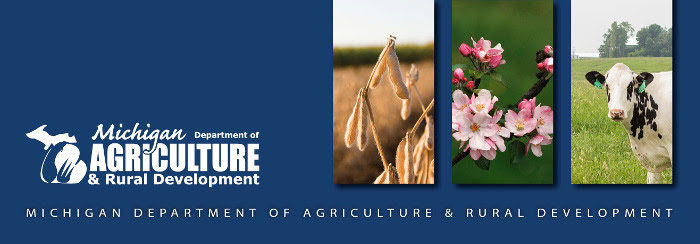
DNR acquires mineral rights at Porcupine Mountains
|
|
|||||
 |
|||||
Upper Peninsula DNR News |
|||||
|

|
|
|||||
 |
|||||
Upper Peninsula DNR News |
|||||
|

|
|
|

Press Release FOR IMMEDIATE RELEASE: Oct. 16, 2024 CONTACT: Lynn Sutfin, 517-241-2112, Sutfinl1@ Michigan receiving more than $109 million to address LANSING – The Michigan Department of Health and Human Services has received a nearly $36.4 million State Opioid Response grant for FY2024 from the Substance Abuse and Mental Health Services Administration (SAMHSA). Over a three-year grant period Michigan is slated to receive more than $109 million in federal funding intended to address the overdose crisis. “These federal funds help our state address the multi-generational impact of the opioid epidemic as well as well as the racial disparities that exist with substance use disorder,” said Elizabeth Hertel, MDHHS director. “Programs focused on prevention, harm reduction, treatment and recovery are saving the lives of Michigan residents each and every day. We will use these dollars to continue investing in supports, improvements and enhancements that further our efforts to decrease substance use disorders, improve treatment options and improve recovery success.” State Opioid Response funding will be used to increase access to medications for opioid use disorder (MOUD) using the three FDA-approved medications; reduce unmet treatment needs; reduce overdose-related deaths through the provision of prevention, treatment, harm reduction and recovery activities for opioid use disorder (OUD) and stimulant use disorders (StUD); and improve the quality of treatment for StUD and OUD. Agencies receiving funding under this grant include Michigan’s 10 Prepaid Inpatient Health Plan regions for publicly funded substance use disorder treatment services, the Inter-Tribal Council and Saginaw Chippewa Indian Tribe, syringe service programs operating throughout Michigan, Michigan State University, University of Michigan, Wayne State University and other state and local agencies providing substance use disorder services. Key new and continuing projects include:
Since 2018, Michigan has received $254 million in State Opioid Response funding to address substance use disorder across the state. These funds are in addition to the nearly $1.6 billion from national opioid settlements Michigan is slated to receive by 2040, with half being distributed to the State of Michigan Opioid Healing and Recovery Fund and the other half being distributed directly to county, city and township governments. For more information on Michigan’s response to the overdose crisis, visit Michigan.gov/SUD. |

|
|
|

 |
| Correction: The previous release had the incorrect total number of counties. The total number of counties covered under the disaster declaration is eleven.
For immediate release: October 15, 2024 MDARD Director Tim Boring Thanks USDA for Disaster Declaration Helping Michigan’s Sweet Cherry Farmers in Eleven CountiesDeclaration provides needed emergency resources for farmers hit by climate events, diseases LANSING, Mich. – Michigan is known as the “Cherry Capitol of the World,” but severe weather events continue to threaten the viability of the industry. This year, the state’s sweet cherry farmers lost upwards to 75 percent of their crops after a mild winter and warm, wet early season conditions led to significant insect and disease damage. In August, Governor Gretchen Whitmer requested a Declaration of Disaster from the U.S. Department of Agriculture (USDA) to make available much needed emergency resources for northern Michigan’s cherry producers. Yesterday, USDA issued disaster declarations for Antrim, Grand Traverse and Leelanau counties. In addition to the three primary counties USDA designated eight contiguous counties under the disaster declarations which are Benzie, Crawford, Manistee, Otsego, Charlevoix, Kalkaska, Missaukee, and Wexford. “I was proud to stand with Governor Whitmer as we urged the USDA to recognize the impact of these disasters on Michigan’s sweet cherry harvest, and glad to see our farmers receive access to critical federal assistance,” said Boring. “Receiving a USDA disaster declaration is key to ensuring producers can access the resources they need. I appreciate USDA Secretary Vilsack for his commitment to Michigan’s sweet cherry farming families.” “From farmers to producers to retailers, so many in our community rely on the success of crops like cherries,” said State Rep. Betsy Coffia (D-Traverse City). “I am glad to see the USDA make this decision to bring some relief for the devastating sweet cherry crop loss and I will continue to seek ways to do more to support our farmers weathering this latest challenge to their livelihoods.” The counties designated by USDA as natural disaster or contiguous disaster areas means qualified farm operators are eligible for low interest emergency loans from USDA’s Farm Services Agency (USDA-FSA) provided eligibility requirements are met. Farmers in eligible counties have eight months from the date of the declaration to apply for loans to help cover part of their actual losses. USDA-FSA will consider each loan application on its own merits, taking into account the extent of losses, security available and repayment ability. USDA-FSA has a variety of programs, in addition to the emergency loan program, to help eligible farmers recover from adversity. For Michigan to receive federal disaster status, the original crop loss estimates must be verified from harvest yield data. If losses of 30 percent or more are confirmed, and the disaster request is granted, eligible state producers will have access to USDA-FSA’s low-interest emergency loan program for up to 100 percent of their weather-related agriculture production losses. USDA-FSA is the agency responsible for compiling the official crop loss statistics and administering the federal emergency farm loan programs. For more information on the federal emergency farm loan programs, please visit the USDA-FSA website. |